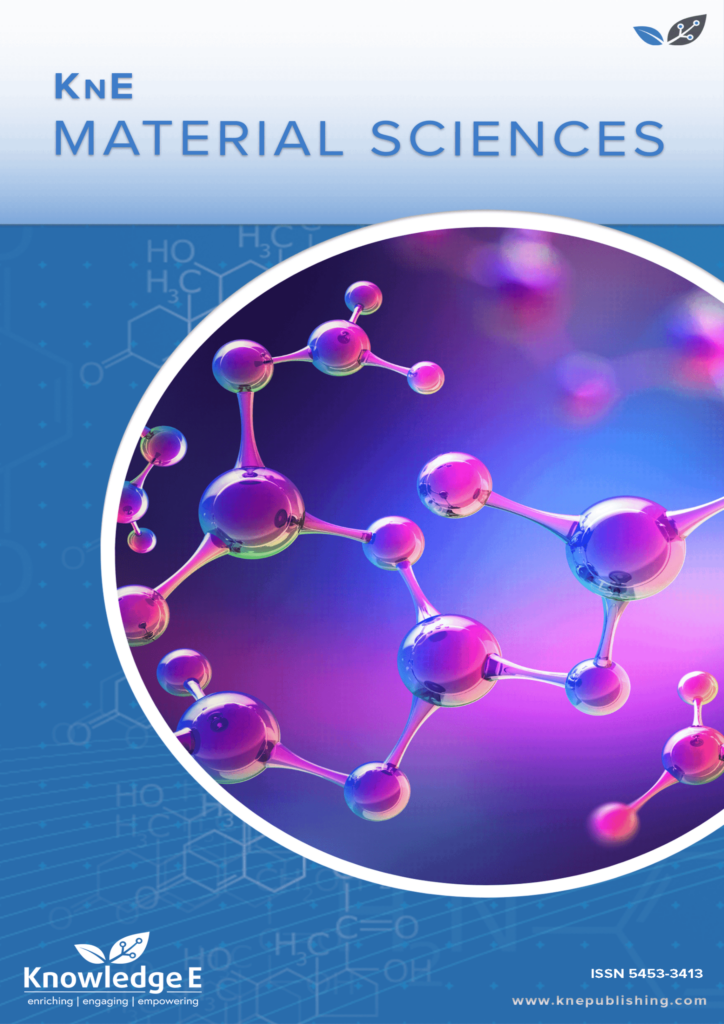
KnE Material Sciences
ISSN: 2519-1438
The latest conference proceedings on physical materials, energy materials, electrical materials.
Degradation of C. I. Direct Red 80 by the Electro-Fenton Process
Published date: Aug 10 2022
Journal Title: KnE Material Sciences
Issue title: 1st International FibEnTech Congress (FibEnTech21) – New Opportunities for Fibrous Materials in the Ecological Transition
Pages: 91–99
Authors:
Abstract:
Electro-Fenton process was applied in the degradation of the textile dye C. I. Direct Red 80 (DR80), using a boron-doped diamond anode and a carbon-felt cathode. The influence of the applied current density and of the type of iron source was evaluated. The iron sources studied were iron sulfate, ferric chloride, iron oxide and chalcopyrite, a natural iron-containing mineral. The obtained results showed that the electro-Fenton process is effective in the DR80 degradation and in the pollutant load elimination. Higher treatment efficiencies were attained when using iron sulfate as iron source. Still, the results obtained with the natural mineral chalcopyrite were quite promising. Although DR80 removal was more efficient at lower applied current densities, the same was not observed for the chemical oxygen demand removal, indicating that, at lower applied current densities, the dye is not completely mineralized, but rather transformed into other by-products.
Keywords: C. I. Direct Red 80; Advanced oxidation processes; Electro-Fenton, Borondoped diamond anode, Carbon-felt cathode.
References:
[1] Brillas E, Martínez-Huitle CA. Decontamination of wastewaters containing synthetic organic dyes by electrochemical methods. An updated review. Applied Catalysis B: Environmental. 2015;166-167:603-643. https://doi.org/10.1016/j.apcatb.2014.11.016
[2] Lopes A, Martins S, Morão A, Magrinho M, Gonçalves I. Degradation of a textile dye C. I. Direct Red 80 by electrochemical processes. Portugaliae Electrochimica Acta. 2004;22:279-294. https://doi.org/10.4152/PEA.200403279
[3] Garcia-Segura S, El-Ghenymy A, Centellas F et al. Comparative degradation of the diazo dye Direct Yellow 4 by electro-Fenton, photoelectro-Fenton and photoassisted electro-Fenton. Journal of Electroanalytical Chemistry. 2012;681:36-43. https://doi.org/10.1016/j.jelechem.2012.06.002
[4] Labiadh L, Oturan MA, Panizza M, Hamadi NB, Ammar S. Complete removal of AHPS synthetic dye from water using new electro-Fenton oxidation catalyzed by natural pyrite as heterogeneous catalyst. Journal of Hazardous Materials. 2015;297:34-41. https://doi.org/10.1016/j.jhazmat.2015.04.062
[5] Souiad F, Rodrigues AS, Lopes A, et al. Methiocarb degradation by electro-Fenton: Ecotoxicological evaluation. Molecules. 2020;25:5893. https://doi.org/10.3390/molecules25245893
[6] Ltaïef AH, Fernandes A, Nunes MJ et al. WASTES – Solutions, treatments and opportunities III. Selected papers from the 5th edition of the International Conference on Wastes: Solutions, Treatments and Opportunities, Caparica, Portugal, 4-7 September 2019. Vilarinho C, Castro F, Gonçalves M, editors. Leiden: CRC Press/Balkema; 2020. https://doi.org/10.1201/9780429289798
[7] Eaton A, Clesceri L, Rice E, Greenberg A, Franson MA. Standard methods for examination of water and wastewater. 21st ed. Washington, DC: American Public Health Association; 2005.
[8] ISO 6332, 1988. In water quality – Determination of iron – Spectrometric method using 1,10-Phenanthroline.
[9] Nogueira RFP, Oliveira MC, Paterlini WC. Simple and fast spectrophotometric determination of H2O2 in photo-Fenton reactions using metavanadate. Talanta. 2005;66:86-91. https://doi.org/10.1016/j.talanta.2004.10.001
[10] Brillas E, Sirés I, Oturan MA. Electro-Fenton process and related electrochemical technologies based on Fenton’s reaction chemistry. Chemical Reviews. 2009;109:6570-6631. https://doi.org/10.1021/cr900136g